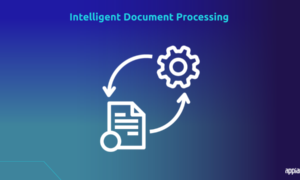Quality assurance (QA) is crucial in delivering reliable and efficient products in today’s fast-paced software development landscape. As the complexity of applications continues to grow, manual testing alone is no longer sufficient to meet the demands of modern development cycles. This is where automation steps in, revolutionizing the QA process and enabling teams to achieve higher efficiency, accuracy, and coverage. In this article, you will explore the pivotal role of automation in modern quality assurance, examining the tools that are reshaping the industry and the best practices. You need to explore Lincode’s advanced quality inspection software that can help you implement effective automated testing strategies in your organization.
The Importance of Automation in Modern Quality Assurance
In today’s fast-paced manufacturing environment, automation has become critical to effective quality assurance (QA) processes. As companies strive to maintain high standards while increasing efficiency, the role of automated systems in QA has never been more crucial.
Enhancing Accuracy and Consistency
Automation significantly improves the accuracy and consistency of quality inspections. By utilizing advanced quality inspection software, companies can eliminate human error and fatigue-related mistakes. This technology ensures that every product is scrutinized with the same level of attention to detail, regardless of the time of day or the length of the production run.
Increasing Efficiency and Throughput
One of the key benefits of automation in QA is the dramatic increase in inspection speed and throughput. Quality inspection software can process vast amounts of data and make decisions in fractions of a second, far outpacing manual inspection methods. This efficiency allows companies to maintain high-quality standards without sacrificing production speed.
Facilitating Data-Driven Decision Making
Automated QA systems generate a wealth of data to be leveraged for continuous improvement. By exploring Lincode’s advanced quality inspection software, manufacturers can gain valuable insights into their production processes. This data-driven approach enables companies to identify trends, predict potential issues, and make informed decisions to optimize their operations.
Adapting to Complex Manufacturing Environments
Modern manufacturing often involves intricate processes and complex products. Automated QA systems can be programmed to handle a wide range of inspection criteria, making them ideal for industries with stringent quality requirements. Quality inspection software can be customized to detect even the most subtle defects, ensuring that only products meeting the highest standards reach the market.
Key Benefits of Automated Quality Assurance
Enhanced Accuracy and Consistency
Automated quality assurance systems offer unparalleled precision in detecting defects and inconsistencies. Unlike human inspectors, who may experience fatigue or distractions, automated systems maintain consistent performance around the clock. By leveraging advanced quality inspection software, manufacturers can significantly reduce error rates and ensure product uniformity across large production runs.
Increased Efficiency and Productivity
Implementing automated quality control processes dramatically speeds up inspection times. Quality inspection software can analyze products at rates far exceeding human capabilities, allowing for higher throughput without compromising standards. This efficiency boost reduces production bottlenecks and faster time-to-market for new products.
Cost Reduction and Resource Optimization
While the initial investment in automation technology may be substantial, the long-term benefits often result in significant cost savings. Companies can allocate resources more effectively by reducing the need for manual inspections and minimizing product recalls due to quality issues. Explore Lincode’s advanced quality inspection software to see how automation can optimize your quality control processes and improve your bottom line.
Data-Driven Insights and Continuous Improvement
Automated quality assurance systems generate vast amounts of data that can be analyzed to identify trends, predict potential issues, and drive continuous improvement. This wealth of information enables manufacturers to make data-driven decisions, refine production processes, and proactively address quality concerns before they escalate into costly problems.
Integrating Automation into Your QA Workflow
Assessing Your Current Process
Before implementing automation, evaluating your existing quality assurance procedures is crucial. Identify bottlenecks, repetitive tasks, and areas where human error is most likely. This assessment will help you determine where automation can impact most.
Selecting the Right Tools
When exploring quality inspection software options, consider solutions that align with your industry needs. Lincode’s advanced quality inspection software offers a comprehensive suite of features to streamline various aspects of the QA process. Look for tools that integrate seamlessly with your existing systems and provide scalability as your operations grow.
Implementing Gradual Automation
Rather than overhauling your entire QA process immediately, adopt a phased approach to automation implementation. Start by automating simple, repetitive tasks and gradually expand to more complex processes. This method allows your team to adjust to new workflows and provides opportunities for fine-tuning the automation as needed.
Training and Upskilling Your Team
As you integrate automation into your QA workflow, invest in training your staff to work alongside these new tools. Equip your team with the skills necessary to operate and maintain automated systems, interpret data, and make informed decisions based on the insights provided by quality inspection software.
Continuous Monitoring and Optimization
Automation is not a set-it-and-forget-it solution. Regularly review the performance of your automated QA processes and make adjustments as necessary. Utilize the analytics provided by advanced quality inspection software to identify areas for improvement and ensure that your automation strategy continues to evolve with your business needs.
Final Thoughts
Embrace automation to enhance, not replace, human expertise in quality assurance. You can boost efficiency, accuracy, and coverage by strategically integrating automated testing and staying informed on emerging technologies. Balancing automation with manual testing ensures high-quality software that meets user and business needs—leverage automation to elevate your QA efforts and drive productivity.


































